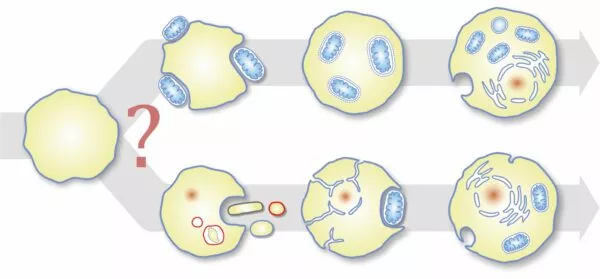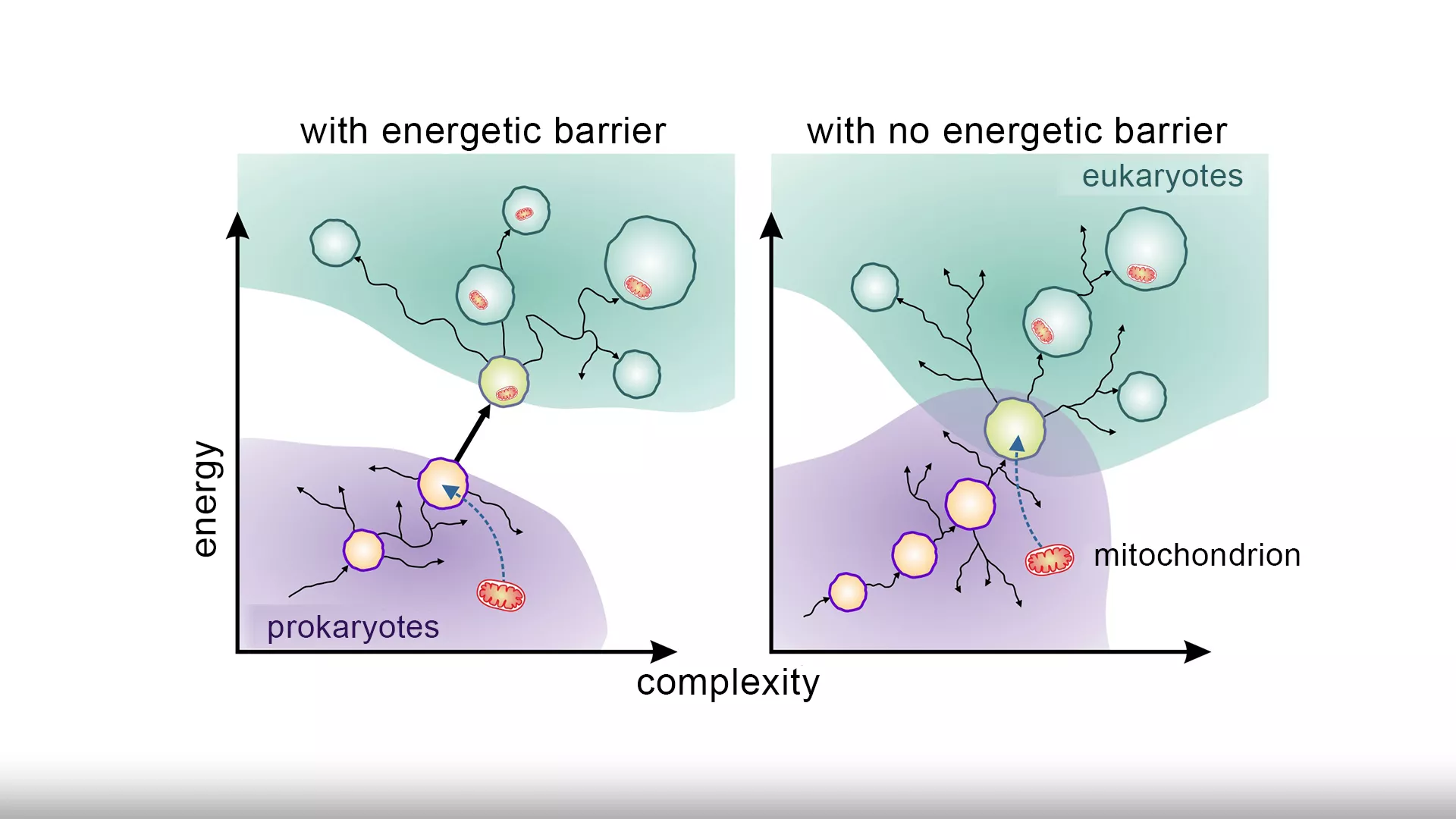The journal Nature Ecology and Evolution asked István Zachar, senior fellow of the Institute of Evolution of the ELKH Centre for Ecological Research (CER) to assess a study on the causes of the formation of eukaryotic cells and also to evaluate the discovery in a separate opinion article. Zachar, a Hungarian evolutionary biologist believes the research will help bring us closer to understanding how eukaryotes – multinucleated organisms – formed approximately two billion years ago.
Animals, plants and all higher life forms are made up of eukaryotic cells, which differ from bacteria in many respects. Among other things, they have a nucleus, and the energy production that takes place within them is carried out by tiny cell organelles, known as mitochondria, which billions of years ago were also independent bacteria themselves. But how did eukaryotic cells come into existence? What kind of cells were their antecedents, and what evolutionary transitions led to their association with the antecedent of the mitochondrion? And finally, how did the eukaryotic life that populates the Earth originate? At this point in time, though evolutionary biologists have only been able to speculate on these questions, step by step they are getting closer to the real events.
István Zachar is researching the beginning point of the eukaryotic transition – the step that started the entire process. “The origin of eukaryotes is particularly interesting because it was at this time that two prokaryotic cell lineages finally merged. It seems that this was a unique and unrepeatable event in the history of life on Earth. It cannot be compared with any other major evolutionary transition,” explains Zachar. “Eukaryotic cells appeared roughly two billion years ago. The transitional forms created during the path leading to the formation of eukaryotes have not survived, so we have little information about them. We know that different prokaryotic cells came into close contact with each other and became eukaryotes, but there is no consensus on many fundamental questions, such as whether the mitochondrion was formed first or the nucleus,” the researcher emphasizes.
“We are not aware of any ‘missing links’, i.e. cells in an intermediate state, half prokaryotic, half eukaryotic, but we do know that eukaryotic organisms can achieve a level of complexity that is unimaginable in the case of prokaryotes,” continues Zachar. The transformation into a eukaryote clearly brought notable advantages, but even more exciting is the question of how this change occured.

According to some researchers, the development of eukaryotic cells began when the ancient host cell ingested another bacterium, but did not digest it. Others believe the host was not even a predator, and that the bacterium could have been a parasite infecting the host. Regardless of the explanation, the end result is the same: the host transformed the captured bacteria into its own cell organelle. This is how the mitochondrion was formed that is today responsible for the energy-producing processes of all eukaryotic cells. Endosymbiosis, i.e. an internal cooperation beneficial to both parties, was established between the two cells, in the framework of which the host cell received energy from the mitochondria, and in return the host provided it with food and security. Not only did the formation of mitochondria and eukaryotic cells only take place on a single occasion during the process of evolution, the two processes happened close to each other in time. As a result, evolutionary biologists have theorized that these two phenomena are very closely related.
But what were the specific benefits of taking in mitochondria, according to these theories? Cellular respiration was transferred to mitochondria, allowing eukaryotic cells to grow much larger than their prokaryotic ancestors. In addition, this freed the cell membrane of the host cells and they became suitable for many other tasks. For example, they were able to switch to a predatory lifestyle, which further increased their success rate.
The study evaluated by István Zachar examined whether the hypothesis that the mitochondrion provided an extremely large energetic advantage to early eukaryotes, since energy production took place inside the cells, was correct. It is estimated that this could have resulted in an energy gain of up to 200,000 times. Modern mitochondria certainly do produce energy efficiently. However, the authors of the study published in the journal Nature Ecology and Evolution also examined how much energy gain can be expected if we do not use modern eukaryotic hosts and current mitochondria as a basis, but the functioning of their ancestors who lived two billion years ago and had not yet adapted so perfectly to the division of labor.

The results found that the assumed energy gain virtually disappears. “Based on the new study, the theory based on the energetic advantage of mitochondria, according to which eukaryotic complexity cannot be achieved without mitochondria, is brought into question. Such models have far-reaching implications for the study of the origin of eukaryotes. These new findings reinforce the theory that mitochondria were not essential for the development of eukaryotes, but rather that the evolutionary innovations of nucleated cells came about gradually, ‘by themselves’, without the help of mitochondria, and that the inclusion of mitochondria only happened later,” summarizes Zachar .
There is increasing evidence that prokaryotic cells could also have achieved the greater complexity associated with the eukaryotic state independently. This is made probable by the fact that there are eukaryotic cells that have lost their mitochondria, but are actively moving, and that there are also prokaryotes that are able to engulf others – previously thought to be an ability possessed only by eukaryotes – and can reach significant complexity and size even without mitochondria. While there are still many unanswered questions about the origin of advanced nucleated life on Earth, evolutionary biologists are certainly getting ever closer to solving the biggest mysteries.